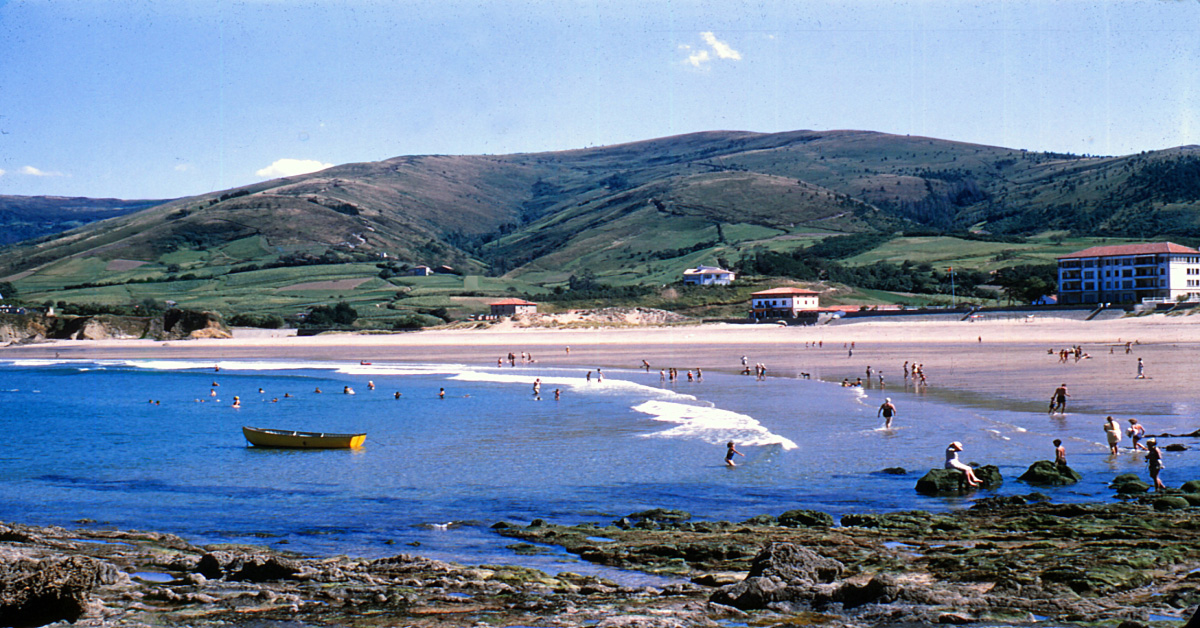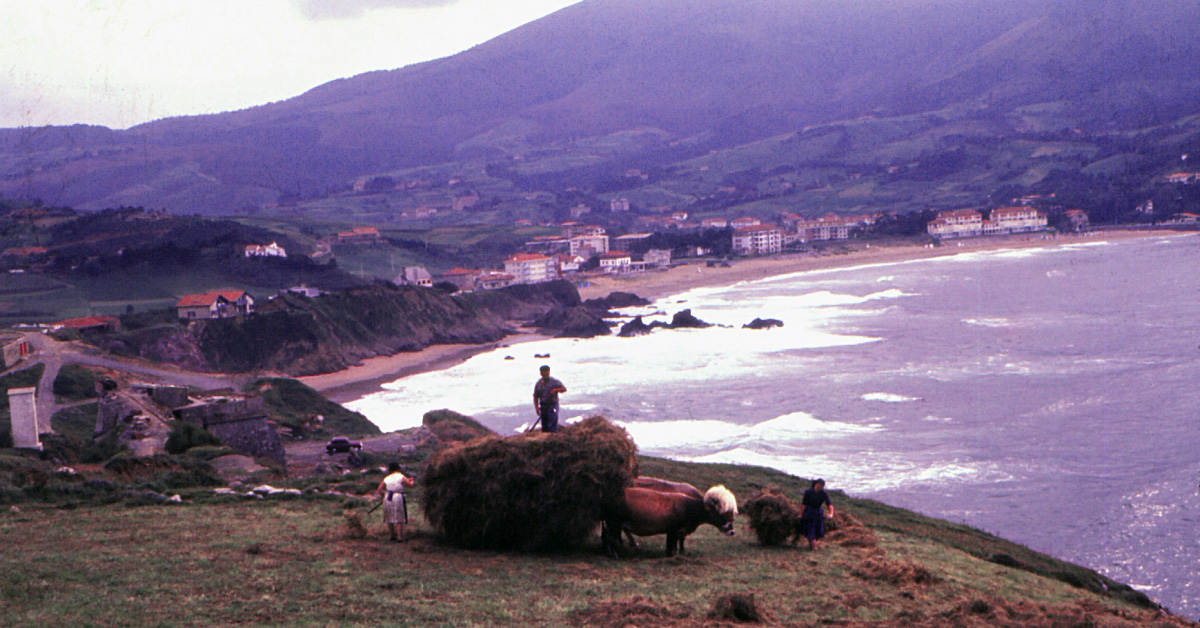Basque ethnography at a glance
Our last blog looked at the relationship of the local residents from Bakio, the baserritarras as they are known, with their beach. Let us continue.
Apart from sand and gravel, gathered from the shore as we described in the first part of this article, the residents of coastal rural areas also used the salty seawater, as they believe it to be healthy and medicinal. Collecting seawater in demijohns was a common practice. The water could be put in a basin and the injured and inflamed part of the body (usually legs, feet or arms) soaked in it. Seawater was also an effective remedy for a head cold; people would put a small amount in their cupped hands and then sniff it into their nasal passages. This would reduce phlegm. Medical science also considered the sea to be beneficial for people’s health and this led to spas (Igeretxe in Getxo, La Perla in San Sebastián) and sanatoriums (Gorliz) being built next to the sea. There were no such buildings in Bakio, but Luisene, an establishment in the dunes, offered summer holidaymakers “salt baths” with seawater in large wooden tubs.
Large amounts of seaweed (itsosbedarrak) are washed up on the beach, at any time of the year and depending on the storms and the state of the sea. The baserritarras often collected and transported it to their land and vegetable gardens, where the wet seaweed was spread out as manure. In some specific cases, large amounts were gathered and sold to larger companies, that used the seaweed to obtain iodine.
Not only the coast’s natural elements were used. The Bay of Biscay is rough and its storms can cause shipwrecks, though more frequently in the past when the ships were made out of timber. The remains of the vessels sunk off the cost of Bizkaia would often be washed up on its beaches and that would also be the case in Bakio. The remains were usually good quality wood, planks and logs, ropes, etc, which the locals would gather and use for some specific purpose or as firewood. There are records of finding white wax from ships, which was used to make candles (they scrapped out the inside of reeds, fitted a wick and filled them with hot wax). The beach was not cleaned in the past as it is today. Unfortunately, bodies of drowned sailors would sometimes be washed up. If their identify and provenance were unknown, the bodies would be taken to the town’s cemetery, where they would receive a dignified burial.
Finally, as the benefits of “sea bathing” began to gradually be more widely known, many beaches, such as Bakio’s, became attractive places for urban dwellers to get away for health and leisure reasons. The summer holiday was born. Unlike other towns with beaches, such as Getxo annd Gorliz, Bakio had no train service and so it was only the wealthier families from Bilbao who went to the beach there. Thanks to the sea and the beach, new job opportunities emerged for the local population serving the holidaymakers (cooks, maids, nursemaids, gardeners, workers, carpenters…) and even the farmsteads benefited by directly selling their produce (milk, eggs, vegetables, fruit…) to the visitors.
The milk from livestock that grazed near to the sea was particularly highly sought after, as the saltpetre from the sea added iodine to the meadows and it was metabolised by the animals into their milk. In the early part of the last century, the doctors warned about the seriousness of the lack of iodine among the population. Demand for this type of milk increased to such an extent that Bakio milk was sold at a higher price than the milk from other locations at the weekly Bermeo and Mungia markets.
Zuriñe Goitia
Anthropologist



